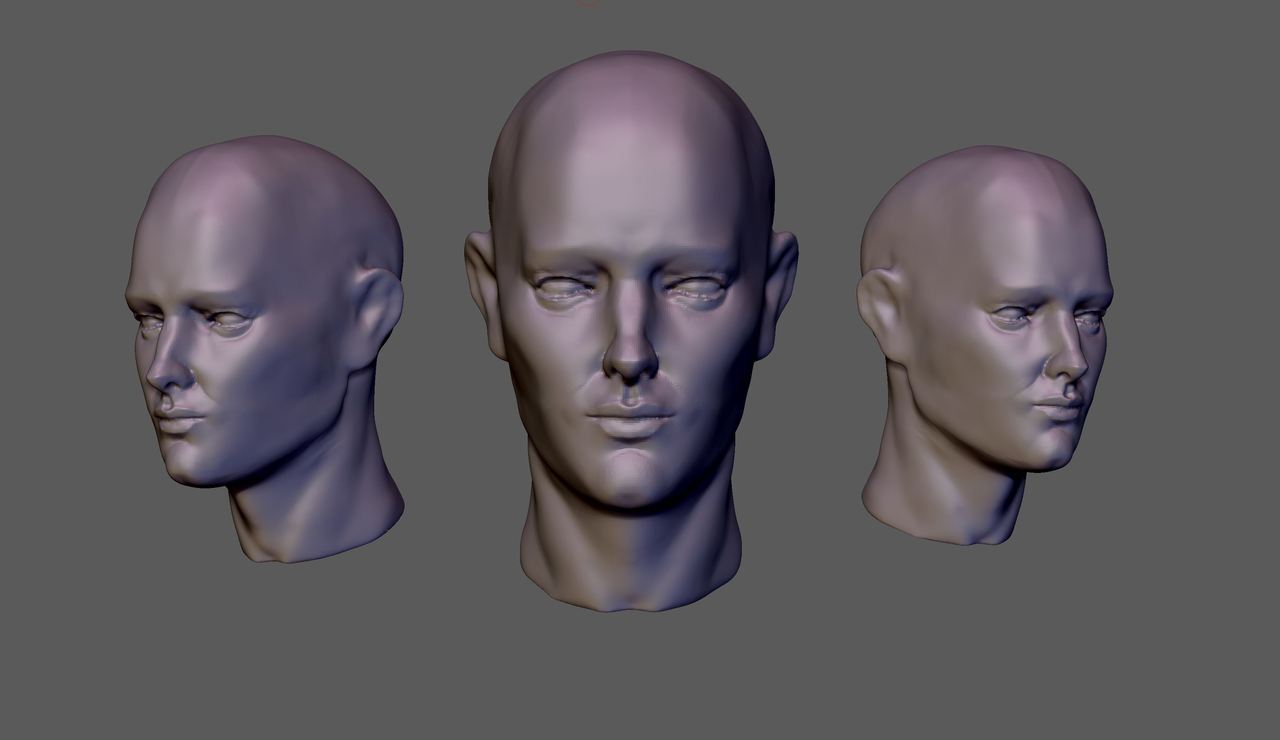The BRAWL² Tournament Challenge has been announced!
It starts May 12, and ends Oct 17. Let's see what you got!
https://polycount.com/discussion/237047/the-brawl²-tournament
It starts May 12, and ends Oct 17. Let's see what you got!
https://polycount.com/discussion/237047/the-brawl²-tournament
[WIP][Zbrush] Photo real Character model (Erica Linder)
So here is the spiel, I'm getting back into character modeling after about two years away from it, I've been the art director on two very small indie games and am looking to get into AAA video games as a character Artist, I hoping to get something worth showing by mid march for GDC but it will likely be a much longer term project.
so For starters this is meant to be a photorealistic model based on Erika Linder, an Androgynous Model/Actress.




So what do I need? I'm specifically looking for feedback on proportions at the moment, I want them to be exact , and right now they aren't there are some good things going on, but the likeness isn't there yet, I'm still roughing things in, and there's already been several iterations, so any tips or observations to help me get closer to the goal will be appreciated.
Also, this is my very first time attempting a photo-real sculpt, so if any passersby have tips on detailing, or on getting a photo real mesh down to game-rez or have any links to some good tutorials laying around that they want to send my way feel free to add it to the post, I'm going to be doing a lot of googling on this one, and I only have about two weeks before the conference so I'm in a bit of a time crunch, but the end goal is to get a kick-ass portfolio piece not to get a job at GDC so let me know.
so For starters this is meant to be a photorealistic model based on Erika Linder, an Androgynous Model/Actress.




So what do I need? I'm specifically looking for feedback on proportions at the moment, I want them to be exact , and right now they aren't there are some good things going on, but the likeness isn't there yet, I'm still roughing things in, and there's already been several iterations, so any tips or observations to help me get closer to the goal will be appreciated.
Also, this is my very first time attempting a photo-real sculpt, so if any passersby have tips on detailing, or on getting a photo real mesh down to game-rez or have any links to some good tutorials laying around that they want to send my way feel free to add it to the post, I'm going to be doing a lot of googling on this one, and I only have about two weeks before the conference so I'm in a bit of a time crunch, but the end goal is to get a kick-ass portfolio piece not to get a job at GDC so let me know.
Replies
Mouth
The eyes are a great landmark to use for figuring out mouth proportions. I've drawn 2 lines from the corner of the mouth: one straight up to the eye, and one to the pupil. Notice that on your model the angle is wider. This usually means your mouth is too narrow.
You can see that the shape of her lips are different from yours. At the corners, the upper lips should "roll" in, while the bottom is defined by the lower muscles. The mouth corners should also indent. There's a big bundle of muscles surrounding the lips. Finding some reference on those muscles and the fat pads on the face (the face has a lot of fat!) will help you define those areas.
Chin
I've drawn a line along the curvature of your chin and her's. Note that her's is soft and curved, while yours is a little longer/narrow and concave. I'd shorten the the chin and fill out that area. Once you fill out the muscles around the mouth, I think that'll improve the forms.
A useful rule of thumb an instructor once gave me is this: most of the shapes of the body and face are convex (curve outward) -- and where they seem concave, it's often just two convex shapes meeting. So instead of just making a concave shape, what you often have to do is identify the convex shapes around that dimple or shadow and sculpt them.
Brow
Pay attention to convex shape over the eye (I forget the name of it, ha) and the general curve of her forehead. Look closely at the planes and curves of the reference -- it helps to draw over them like I've done.
I'd bring it to a much lower poly count with dynamesh, and think through the planes and greater shapes of her face while using anatomy reference to really see what you're looking at, then move into detailing and so on. Knowing whether a lump is actually a bone, bundle of muscle, or pad of fat makes a big difference when rendering it.
My favorite resource is Anatomy for Sculptors - it contains an extremely clear and concise breakdown of the body and face's shapes. There are also a bunch of great scans and models online that you can use as reference in 3D -- I like 3D Scan Store. I've heard that Marc Brunet over at Cube Brush has a good video series on anatomy (it's for drawing, but the principles should carry over.)
As far as GDC goes, 2 weeks is a short time frame to get a nice portfolio piece on something you're doing for the very first time. If you want to get good at modeling realism, I'd plan around that and let people know about it when they ask what's up! Be honest and earnest about the fact that you're just starting. Folks appreciate that kind of authenticity at conferences.